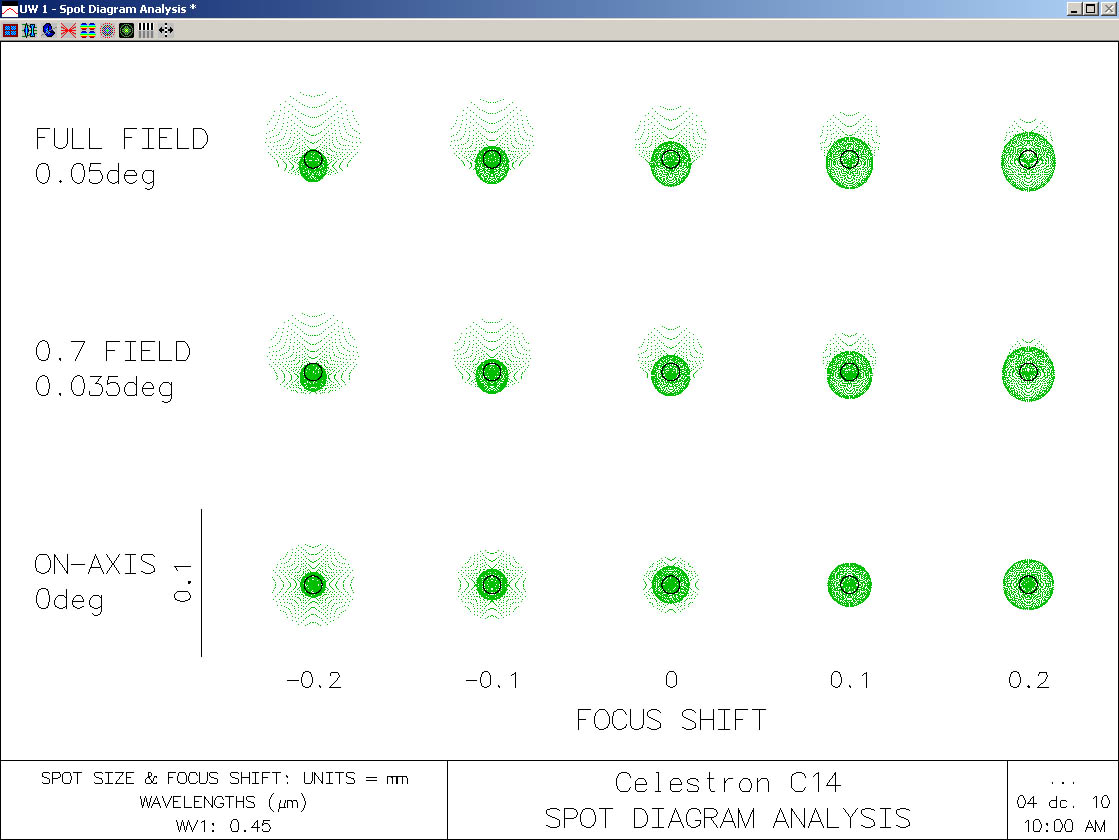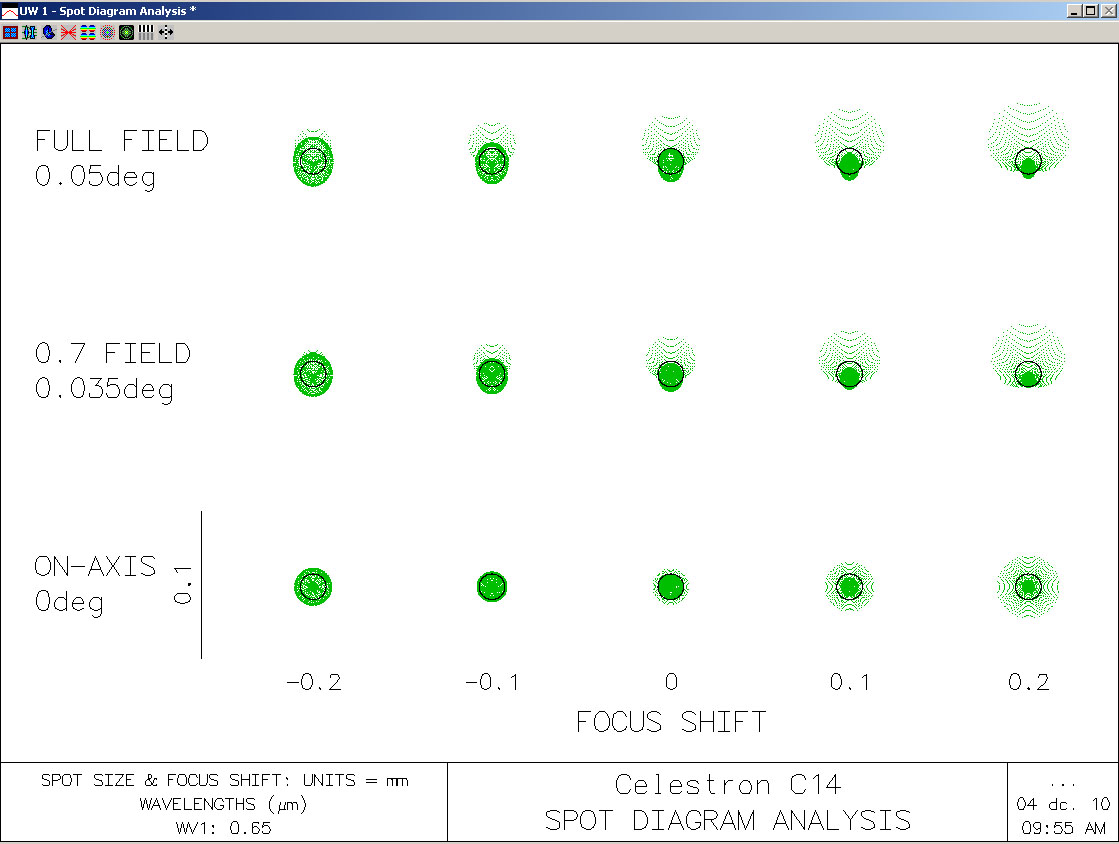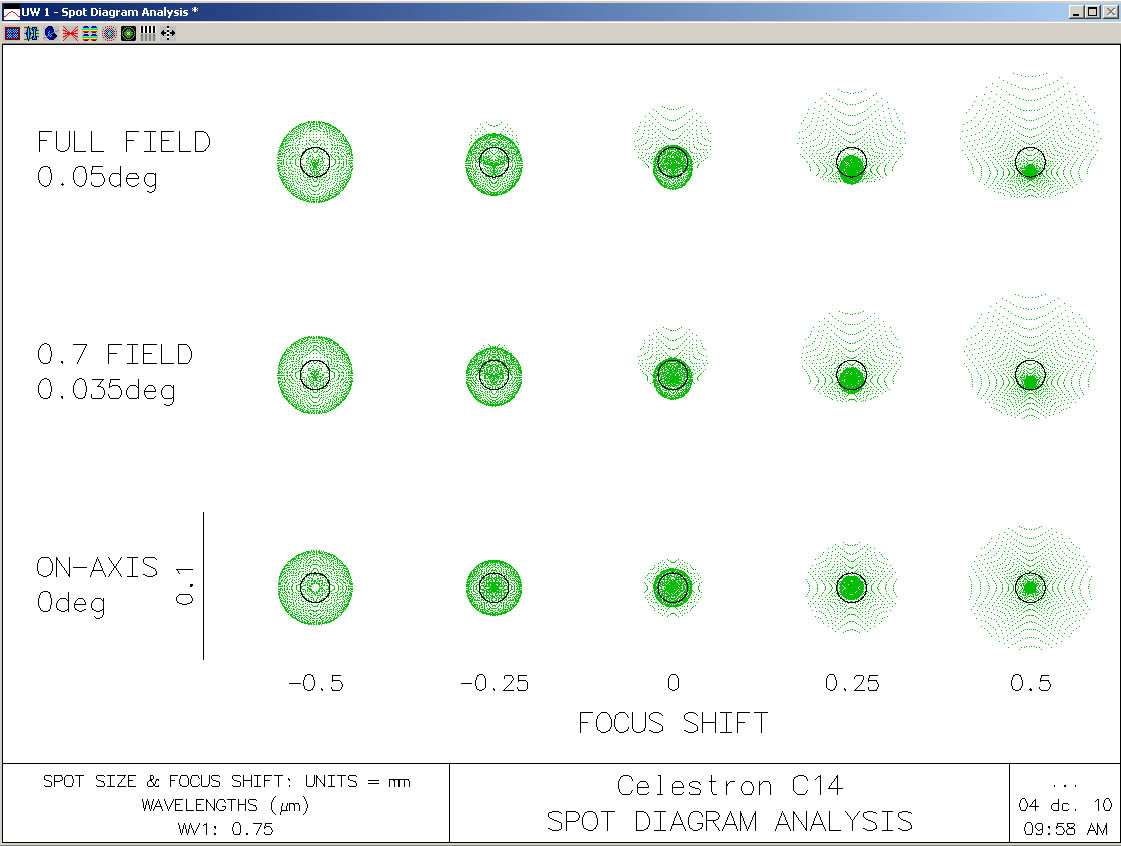
Simulation of the optical performances of the Celestron 14 for high resolution imaging
Optical simulations with OSLO
The Oslo model used here is from Ken Hutchinson (ref : Celestron SCT vigneting Analysis, 2007) and Thierry Berthe (ref Astrosuf)
Warning : This model assumes the Schmidt plate is designed to suppress spherical aberration in green light (550 nm), but ... there is no way to confirm this hypothesis ... nor to confirm the modelling ...
Table of contents :
1 - Strelh ratio = f(wavelenght)
2 - Longitudinal spherical aberration
3 - Focus shift with wavelenght
4 - Spot diagram
5 - MTF
With nominal (173 mm) and extended (274 mm) backfocus

- The C14 does not like blue light ...
- Increasing the backfocus shifts the best correction toward longer wavelength (ie. toward red).
- Strelh ratio > 0.80 : from about 485 to 900 nm with nominal backfocus, and from about 500 to beyond 900 nm with 274 mm backfocus.
- Note : Rayleigh criteria : wavefront L/4 P-V, strelh = 0.8 and about rms = 0.07 L
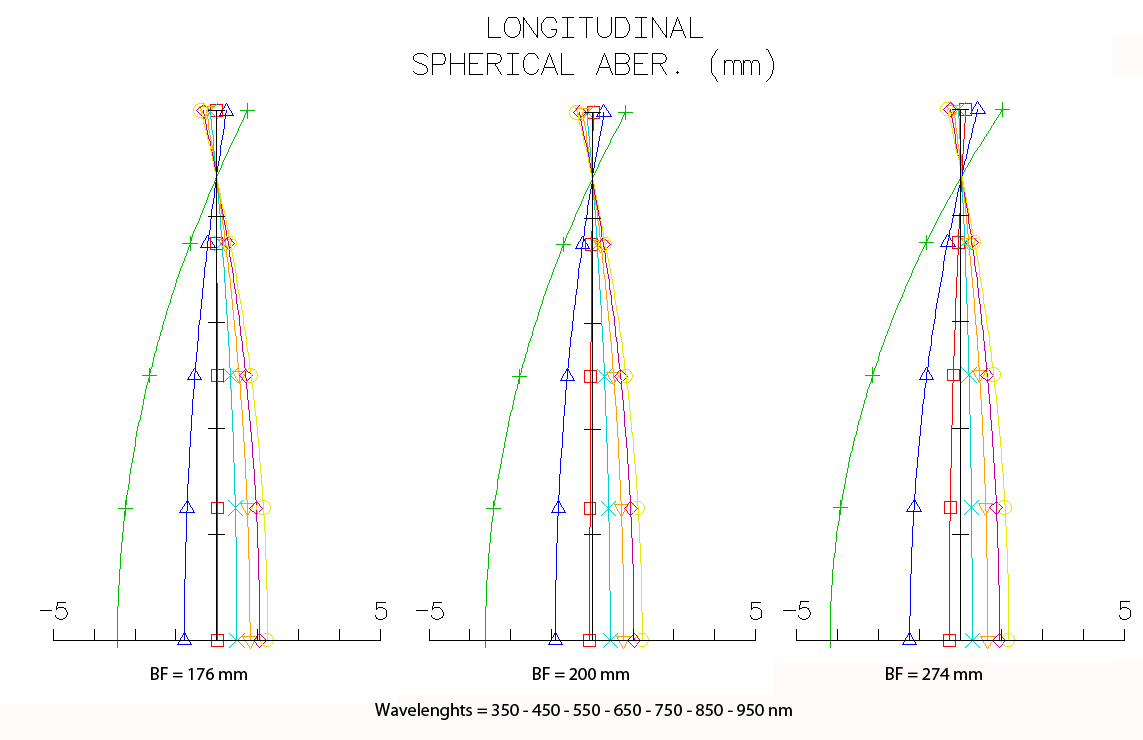
- With the nominal back focus, the spherical aberration is nul (which is not surprising because this was the main assumption of the determination of the OSLO model ...).
- Increasing the backfocus shifts slightly the best correction toward longer wavelength (ie. toward red).
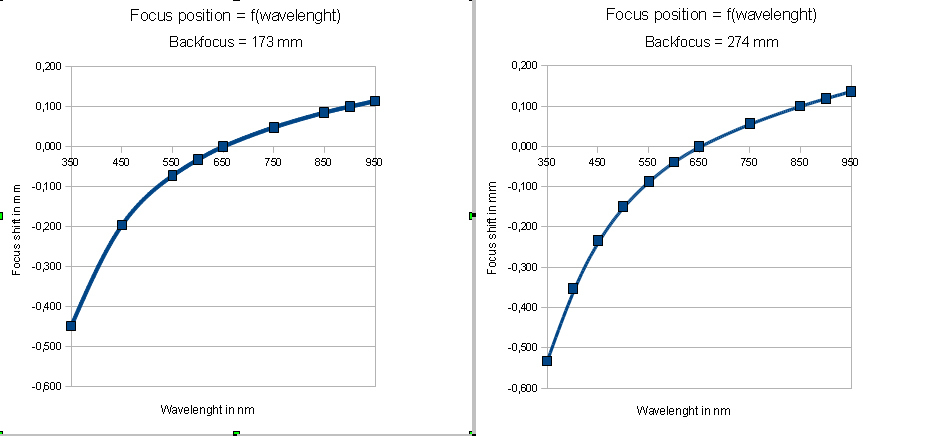
- Nominal backfocus -173 mm)
- Best focus on axis fo each color, flat focal plane, the airy disk is the black cercle.
- 0.05° is about the border of the field covered by a Skynyx 2.1M video camera.

